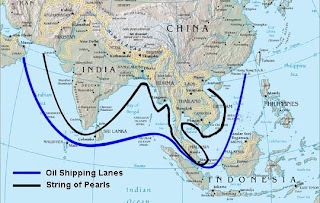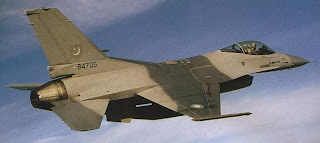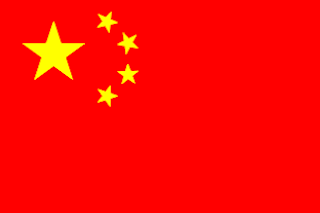


Currently, there is an increased frenzy about China’s incursions, referred to by some of the seasoned analysts as “war hysteria”. China, from 1962, never deviated from its path of an aggressive posture. While India is being blamed for its 1962 syndrome, China is equally guilty of freezing its 1962 mindset on India.
But India is itself to blame for the present situation.. While China, slowly and steadily was on the military build-up, Indian leadership has continuously followed an ostrich like approach towards the implications. It pains to accept the China’s description of India as a ‘paper tiger’. By this, I don’t refer to the capability of our armed forces but to the timidity of our Indian leadership. Many articles, have already been written on the timidity of Indian leadership and the ineptitude towards strategic and military doctrines. Hence, this article mainly tries to draw a comparison of the nuclear forces by these countries to assess where India stands, at present.
Nuclear Forces by 2006-2007
The data for the countries were not available at the same timeline hence, the closest available data were used. According to the Nuclear Notebook published in the Bulletin of Atomic Scientists, China’s nuclear arsenal comprised of around 130 nuclear warheads deployed in missiles and aircraft and 70 more is predicted to be in storage. According to the report around 80 warheads are deployed in the ballistic missiles of DF-3, DF-4, DF-5 and DF-21. China is retiring some of its liquid fueled DF-3 missiles with a range of about 3100Km but has slowed down the retirement of the missiles, apparently, due to delay in the deployment of modified DF-21 and DF-21A missiles with a range of around 2100Km.
China has deployed around 22 two-stage DF-4 missiles with a range over 5500Km, the targets for some of these missiles is expected to be in Russia, India and Guam. While the number of Chinese ICBM, DF-5, is unclear Chinese military power 2005 claims to have deployed 20 of them in 20 launchers. These missiles are capable of targeting the entire continental US. China, undergoing military modernization, for quite sometime is also developing a new 3-stage, solid-fueled, mobile ICBM, DF-31 with a range of about 7200-8000Km and a circular error probable of 300 to 600 meters. The targets for these missiles are expected to be in India and Russia from the range of the missiles. Another version of DF-31, DF-31A, is expected to have range of about 12000Km. Reportedly, China have had the capability for Multiple Reentry Vehicles and Multiple Independently Targetable Reentry vehicles. China is also developing new nuclear powered submarine capable of carrying 16 modified versions of DF-31 missiles which is expected to be deployed in 2008-2010 or later. China also has a stock of nuclear payload to be delivered through aircraft, whose combat radius is around 3100 Km.
In 2007, Pakistan was credited with a nuclear arsenal of 60 and it is busy in increasing its capability rapidly. From 2005-2007, Pakistan has deployed two nuclear capable missiles and developments are underway for the third. According to the reports, Pakistan, which declared a moratorium in 1991 on the production of highly enriched uranium (HEU) soon resumed its production of the weapon grade uranium and has setup a 40-50MW heavy water Khushab plutonium production reactor completed in 1998 and work were under way for the second reactor which will double its production capability. In this venture Pakistan is being helped totally by china. No one appears to blame China which is the root cause of proliferation by Pakistan.
Pakistani nuclear devises are expected to have a yield in between 5 – 10 kilotons. Pakistan was developing a nuclear capable cruise missile with a range of around 500 Km.
By 2007, India has produced enough plutonium for around 100 payloads but is estimated to possess only 50-60 warheads by the time. According to the report, India’s nuclear deterrent is predominantly aircraft-based. While, after the repeated announcements of Indian officials, US Air force in 2006 reported that India has not deployed Agni I and Agni II. While Agni III, Dhanush and Sagarika are underdevelopment, a cloud of uncertainty surrounds the Indian missile based nuclear deterrent capability. While technical capability exists in India for developing and deploying missiles, the reports questions on the number of missile currently deployed.
Nuclear Forces by 2008-2009
In 2009, Bulletin of Atomic scientists has estimated the Pakistan’s nuclear arsenal to include 70-90 warheads and that it is busily enhancing its nuclear capabilities. In 2009, Pakistan was readying a new nuclear capable ballistic missile and two cruise missiles for deployment. Pakistan is believed to have produced around 2000kg of HEU and 90 Kg of plutonium sufficient to build 80-130 Kg. But based on several factors, the report suggests that Pakistan has not yet crossed 100 warheads. Reportedly, all of Pakistan’s missiles and aircrafts are of dual purpose. Pakistan is also expanding its nuclear processing facilities. Hilary Clinton, in her address to Congress have said that Pakistan’s Nuclear arsenal are spread across the country and not in a single central location. The aircrafts deployed for nuclear mission are predominantly F-16s given by the US by waiving the Pressler Amendment. The cruise missile of Pakistan, Babar, is similar to that of the Chinese DH-10 air launched cruise missile and has a range of about 320Km, according to US intelligence agencies, as opposed to the media that suggests it to have a range of 500-700Km. The design of the missile also suggests that Pakistan scientists to have made progress in warhead miniaturization. The other cruise missile Ra’ad is expected to have stealth and standoff capability at sea and land.
In report on Chinese nuclear forces in 2008, it is believed that China is expanding its nuclear arsenal boosting its number by 25 percent since 2005. In 2008, China also deployed DF-31, DF-31A and DH-10 missiles. By 2008, China is also reported to be building 4 new ballistic missile submarines. By 2008, China is estimated to possess around 176 nuclear arsenals deployed by missiles and aircrafts. Another 65 warheads is expected to be in storage. The nuclear arsenals are expected to have a yield of 10Kilotons to 3 Megatons. The Pentagon projects that by 2010 Chinese nuclear forces would include DF-4s, DF-5As, DF-31, DF-31As and upto 5 Jin class submarines carrying between 10 and 12 Jl-2 SLBMs.
According to report on Indian nuclear capability in 2008, India is reported to be struggling to develop a complete nuclear triad and currently only its fighter bombers constitute the fully operational leg. All Indian nuclear delivery systems are dual-capable but their operational status are ambiguous. The report estimates, India to have assembled around 70 warheads but only 50 is expected to be operational. Currently, out of the four land based missile systems, only Prithivi has been fully deployed but how many of them are deployed with nuclear warheads is uncertain. Of the variants of Prithivi, only the army version is identified by CIA to have a nuclear role. The report is skeptical about India acquiring multiple warhead capability any time soon. Another subsonic cruise missile is also reported to be under development.
Conclusion
Compared with Pakistan and China, India scores low with respect to its military modernization and preparedness. Much of the India’s long range missiles were not fully operational. It is also alarming to note that Pakistan as well as China are expanding their nuclear arsenal rapidly creating a huge gap between the numbers with India. Indian leadership is yet to shed its timidity and ineptitude to come up with a strong military doctrine. It is also worth noting that, apparently the current government's diplomacy and the so-called US relationship seems to have no say in the expansion of the nuclear capability of Pakistan. Pakistan’s Babur cruise missile, which is believed to be based on DH-10 of China also asserts beyond doubt the proliferation of missile technology by China, which is a member of security council and it is be noted that none of the superpowers have done anything to put a tab on China.
In this scenario, India still is unlikely go down the 1962 scenario. But this time, India has to remember that Pakistan’s interest in India is not just Kashmir. It is also foolish to believe that China’s interest is limited to Arunachal Pradesh. In practice, India should build up to be fully capable of deterring Chinese incursions. It has to expect a two multi-point war as China has covered India on all sides and with a strong ally in the west. India’s missile systems are not fully developed and/or deployed restricting its capability. India is also continuously failing to take advantage of its technically developed workforce, much of which moves to other nations for better education, and opportunities. Indian establishment is yet to take steps to bring in the Indian minds from abroad. To be eligible for an NRI to be considered for DRDO, he has to have a PhD and at least 3 years of experience abroad. Most of the people by the time would have settled and it is practically not possible for them to return even if they wish to. ISRO, has not even an option for an NRI. Corruption and the lethargic unchecked bureaucracy is continuing to be another checkpoint for India to develop.
It is also to be noted that Pakistan’s ISI is having a significant presence in India but not the other way around. Indian RAW is considered to be one of the most bureaucratic organizations and Mr. Gujral’s misplaced trust has fully left India vulnerable. Taking into consideration the Chinese publication to split India into many parts it could be expected by Pakistan to up its shadow war against India with China acting as a pressure point for any retaliation by India. India lost its covert capability long ago and will the political leadership allow the organization to renew it?
If Indian governments timidity and lack of foresight continues then Indians should brace themselves for another 1962 embarrassment .
*The source on Nuclear arsenals were taken from Bulletin of Atomic Scientists.
Sidharth K Menon
Defence and Intelligence Analyst











 's
's




